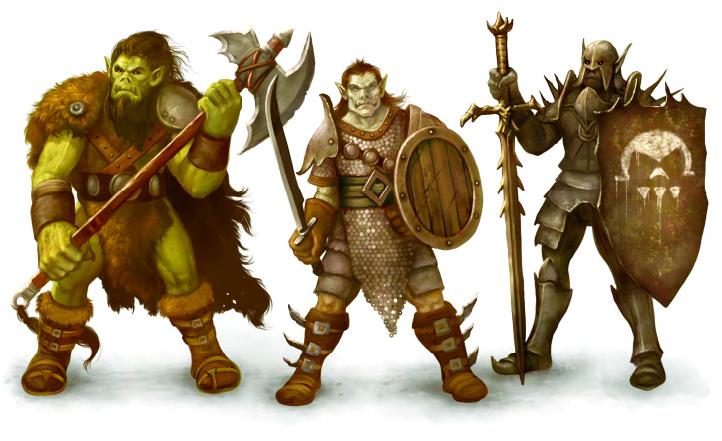
The first two parts of this series:
1. Orcs - Considered
2. Orcs - Defended
Made the case that Orcs are not only popular and useful, but a good opponent for adventurers.
I will go one step further and recommend that you use them in a game, very soon.
First, there are a lot of orc resources available. If you don't have the miniatures to use, then these paper figures are an excellent resource. As are these, by the same artist. If you would like to include allies for your orcs, then there are also goblin figures and kobold figures.
Second, there are great online dungeon and treasure generators. If you want excellent, free, maps of dungeons and castles - and any other encounter location - then you could do much worse than to check the online Map archive at the Wizards of the Coast website.
Now, take your dungeon, with treasures. Add some traps (difficulty to find and disarm appropriate to the level of the scenario, and also to the likelihood of a thief being with the players). More if you like them. A couple of magic fountains, and some interesting dungeon flora and fauna (fungus with magic effects; natural dungeon dwellers such as bats, giant ticks, stirges, or other party guests) should round out things nicely. Help from AEG's Toolbox, or the (most excellent) 1st Ed. AD&D DM's Guide, or the new Engineering Dungeons title from Troll Lord games should all help.
Once the basic environment is set, then you can add your orcs. Lots of them. In interesting and diabolical combinations. Have a good half dozen or more per populated room (about 50-70% of the rooms should have some sort of challenge in it - either a monster, some orcs, or a puzzle/trap). Make the Orcs have a level approximately 1-2 HD lower than the players. If you need lesser creatures, then a subservient tribe of orcs, or lower caste orcs, or some of the lesser beings - such as goblins or kobolds can be used.
When placing the orcs in the dungeon rooms, and setting up the architecture of the rooms, consider it a challenge. The Orcs aren't stupid, and are quite martial minded, and they would set up all sorts of defensive mechanisms. So you have a few trapped hallways? The orcs should know the way around. They can dig (in a fashion) and if taking up a semi-permanent residence in a dungeon complex, they would set all sorts of traps, ambush points, and escape tunnels. In other words make it a Challenge for the players.
Example Room:
43 - This room once served as the meditation room for the priestess of lolth who built the dungeon. It contains some lovely tapestries on the wall with Drow artwork and motiffs in the designs (very heavy, but worth approx 900gp to a collector). The room has a stone gargoyle carved in the north wall, with a fountain flowing out. The water in the fountain is magical, and will serve to immaculately clean any metal implement (and restore it to perfect working condition - sharp, repaired, shined) that is placed in it. In the room, seated at a heavy wooden table, in chairs that were once upholstered, are four orc warriors {4HD, 25hp, AC16, +6 to hit, broadsword (init+8, dam2d4+3)}. Around the upper level of the room, on the east and west walls there are small eyeslits that can be viewed from the gallery level of the third level of the dungeon (rooms 32 and 34). There might be anywhere between 4 and 8 goblin archers {1HD, 5hp, AC13, +2 to hit, short bow (init+6, ROF2, dam1d6)} on each side. In a hollow compartment of one of the table legs there is a potion of heroism and a map through the ankheg maze on level 6.
The Heroes in the game are tough enough. So when designing a challenging adventure, make it nasty, make it fun, and make it surprising. I recommend the orcs. If they aren't enough, toughen them up with magic, bugbears, or trolls. Yeah, trolls. ooooooh.....
Tags: orcs

No comments:
Post a Comment